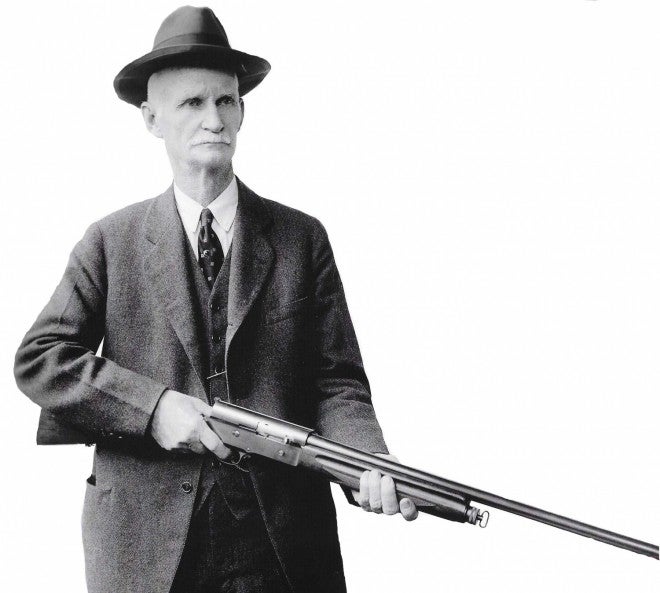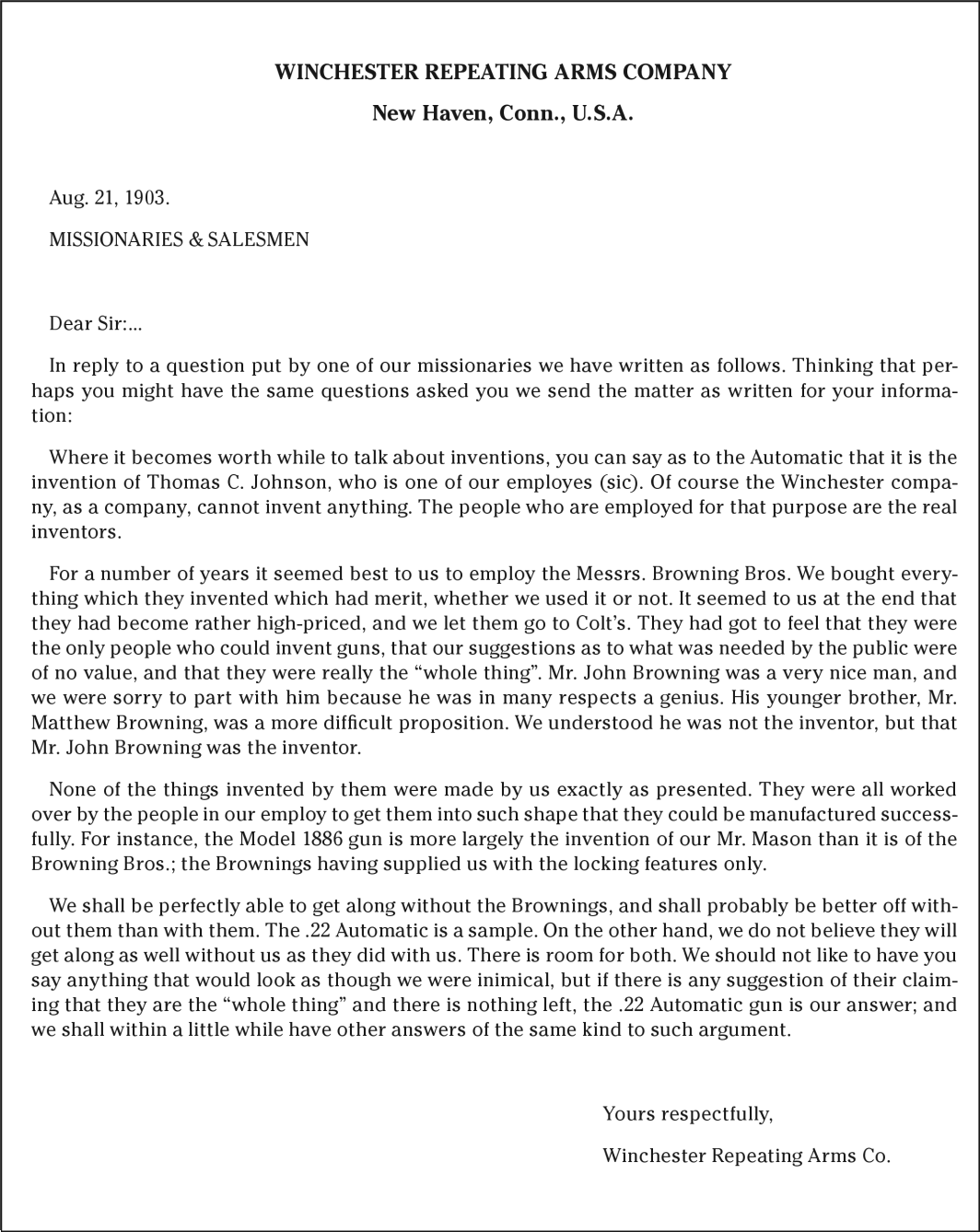What sort of mistake could possibly take the top spot of “worst decisions in firearms history”? It would have to be a decision that not only in retrospect but at the time was one of the worst possible decisions a company could make, and it would have to have longstanding aftereffects that would change firearms history forever.
It would have to be a decision like… Winchester Repeating Arms Co. parting ways with the famous John Moses Browning (page 152):
It may seem impossible today, but it’s true that in 1903, Winchester let go of the firearms designer that would eventually hold the virtually indisputable top spot among firearms designers in the entirety of history. Winchester felt that John Moses Browning, inventor of almost countless entirely new kinds of firearms, was simply too expensive to keep on the payroll. Apparently, though, Browning was not too expensive for Colt’s or Belgian manufacturer Fabrique Nationale, both of whom were quick to offer Browning acceptable agreements to produce his revolutionary firearms designs.
It is quite unthinkable to the modern mind that any company could possibly let go a talent such as Browning’s, but what’s beyond baffling is the fact that the dispute that led to Browning’s release from Winchester was over the design that would become the Browning Auto-5 shotgun – the very first semiautomatic shotgun ever produced. Browning had previously agreed to work for Winchester producing designs for a flat fee – for his revolutionary Auto-5, he wanted revolutionary payment in the form of royalties. Winchester did not accept this, and as a result the company went without Browning’s genius for 23 more years, during which time the greatest firearms designer ever to live invented the handguns that led to the timeless 1911, the Remington Model 8, FN Model 1910, the Remington Model 17 (which itself led to the Model 31, the Ithaca 37, and the Browning BPS) the M1917 machine gun and its air cooled follow on, the M1919, the BAR, the Remington Model 24, the M2 .50 caliber machine gun, the Superposed shotgun, and other firearms. In light of this, Winchester’s assessment that it “shall be perfectly able to get along without the Brownings, and shall probably be better off without them than with them… We do not believe they will get along as well without us as they did with us” can at best be met with protest.
Winchester surely had its reasons for letting the Browning brothers go, but even at the time the folly of this decision should have been obvious. Browning was no novice to firearms design and had already more than once revolutionized the world of firearms with the 1897 shotgun and the 1895 machine gun. It should have been clear to the leadership at Winchester that retaining Browning was a priority above all others… But to the delight of competitors companies like Remington and FN, it wasn’t.
 Your Privacy Choices
Your Privacy Choices

